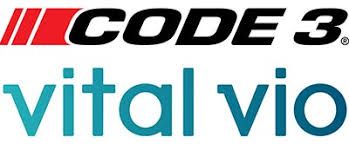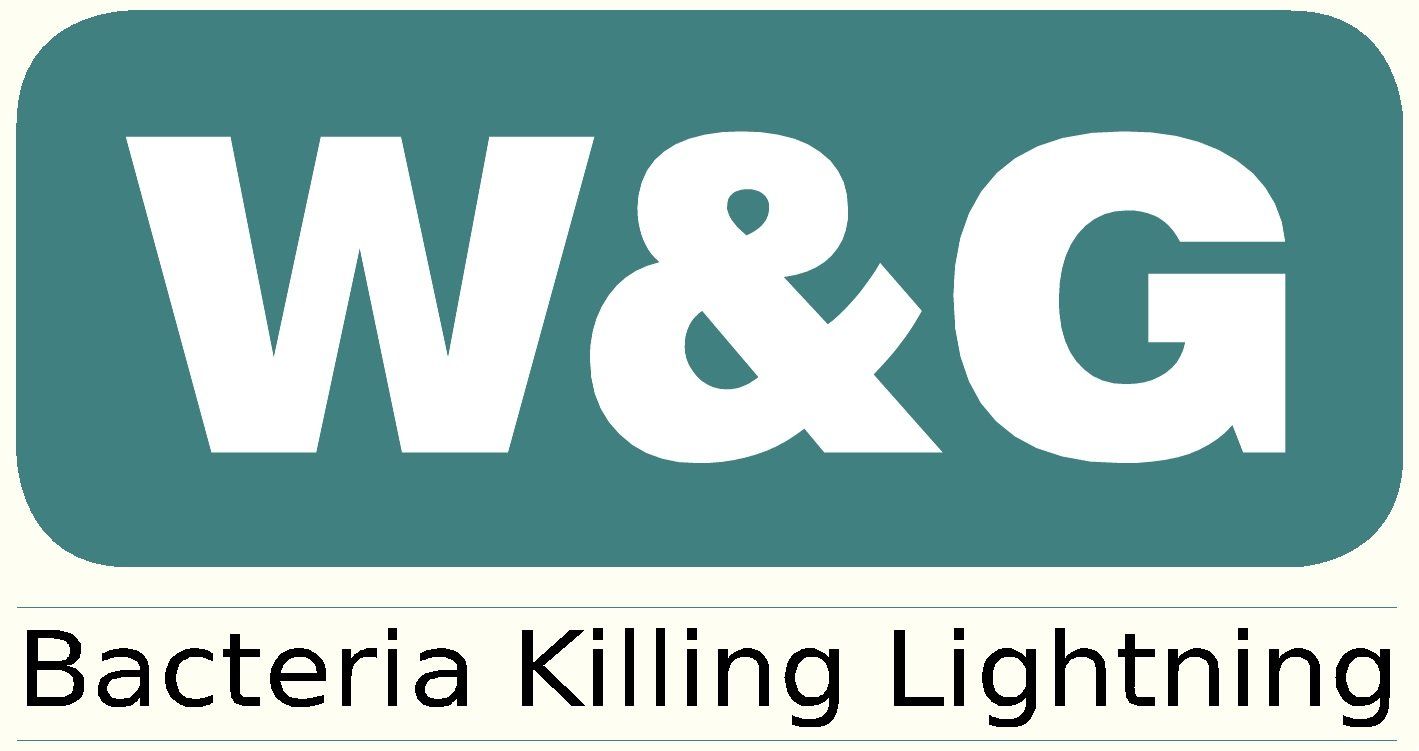Journal of Hospital Infection, Volume 88, Issue 1, 1 - 11
405 nm light technology for the inactivation of pathogens and its potential role for environmental disinfection and infection controlBackground
Although the germicidal properties of ultraviolet (UV) light have long been known, it is only comparatively recently that the antimicrobial properties of visible violet–blue 405nm light have been discovered and used for environmental disinfection and infection control applications.
Aim
To review the antimicrobial properties of 405nm light and to describe its application as an environmental decontamination technology with particular reference to disinfection of the hospital environment.
Methods
Extensive literature searches for relevant scientific papers and reports.
Findings
A large body of scientific evidence is now available that provides underpinning knowledge of the 405nm light-induced photodynamic inactivation process involved in the destruction of a wide range of prokaryotic and eukaryotic microbial species, including resistant forms such as bacterial and fungal spores. For practical application, a high-intensity narrow-spectrum light environmental disinfection system (HINS-light EDS) has been developed and tested in hospital isolation rooms. The trial results have demonstrated that this 405nm light system can provide continuous disinfection of air and exposed surfaces in occupied areas of the hospital, thereby substantially enhancing standard cleaning and infection control procedures.
Conclusion
Violet–blue light, particularly 405 nm light, has significant antimicrobial properties against a wide range of bacterial and fungal pathogens and, although germicidal efficacy is lower than UV light, this limitation is offset by its facility for safe, continuous use in occupied environments. Promising results on disinfection efficacy have been obtained in hospital trials but the full impact of this technology on reduction of healthcare-associated infection has yet to be determined.
Disinfection, Environment, Pathogens, Hospital-acquired infection, Infection control, Violet–blue 405nm ligh
405 nm light technology for the inactivation of pathogens and its potential role for environmental disinfection and infection control
Environmental decontamination of a hospital isolation room using high-intensity narrow-spectrum light
The performance of a new decontamination technology, referred to as ‘high-intensity narrow-spectrum light environmental decontamination system’ (HINS-light EDS) was evaluated by a series of three studies carried out in a hospital isolation room used to treat burns patients. The ceiling-mounted HINS-light EDS emits high-intensity 405 nm light which, although bactericidal, is harmless to patients and staff thereby permitting continuous environmental disinfection throughout the day. Performance efficacy was assessed by contact agar plate sampling and enumeration of staphylococcal bacteria on environmental surfaces within the room before, during and after HINS-light EDS treatment. When the room was unoccupied, use of HINS-light EDS resulted in ∼90% reduction of surface bacterial levels and when the room was occupied by an MRSA-infected burns patient, reductions between 56% and 86% were achieved, with the highest reduction (86%) measured following an extended period of HINS-light EDS operation. In an on/off intervention study, surface bacterial levels were reduced by 62% by HINS-light EDS treatment and returned to normal contamination levels two days after the system was switched off. These reductions of staphylococci, including Staphylococcus aureus and meticillin-resistant S. aureus, by HINS-light EDS treatment were greater than the reductions achieved by normal infection control and cleaning activities alone. The findings provide strong evidence that HINS-light EDS, used as a supplementary procedure, can make a significant contribution to bacterial decontamination in clinical environments.
The relative antimicrobial effect of blue 405 nm LED and blue 405 nm laser on methicillin-resistant Staphylococcus aureus in vitro.
Masson-Meyers DS1, Bumah VV1, Biener G2, Raicu V2,3, Enwemeka CS4,5.
Abstract
It has long been argued that light from a laser diode is superior to light from a light-emitting diode (LED) in terms of its effect on biological tissues. In order to shed light on this ongoing debate, we compared the antimicrobial effect of light emitted from a 405-nm LED with that of a 405-nm laser on methicillin-resistant Staphylococcus aureus (MRSA) at comparable fluences....
Antibacterial effect and mechanism of high-intensity 405 ± 5 nm light emitting diode on Bacillus cereus, Listeria monocytogenes, and Staphylococcus aureus under refrigerated condition.
Kim MJ1, Mikš-Krajnik M2, Kumar A1, Ghate V1, Yuk HG3.
Author information
This study investigated the antibacterial effect of 405 ± 5 nm light emitting diode (LED) on Bacillus cereus, Listeria monocytogenes, and Staphylococcus aureus, and examined its antibacterial mechanism by determining the bacterial membrane and DNA damages. A 405 ± 5 nm LED illuminated the Gram-positive pathogens until 486 J/cm(2) at 4 °C. Weibull model was used to calculate reliable life (tR) to compare bacterial sensitivities to LED illumination.
Review of the Comparative Susceptibility of Microbial Species to Photoinactivation Using 380–480 nm Violet-Blue Light
Utilizing Passive Light-Emitting Diode Disinfection Technology to Effectively Reduce Microbial Contamination in a Trauma Room
Jared Sutton, MPH, CIC Elizabeth Cardinale, MSN, RN-BC, CIC Steven Epstein, MSBmE, MD, FACS Lisa Nummi, DNP, ARNP Carol Bissinger, BSN, RN, CEN Clinton Holder, MD Bayfront Health St. Petersburg
Optical Filter Enabled Continuous Disinfection of Hospital Rooms Using Multi-Sensor Feedback Aided Light Source
Overview of the Safety and Efficacy of Code3vitalvio/VioSafe® Visible Light Disinfection
Vital Vio is pioneering a new category of disinfection: Continuous Disinfection. Current cleaning and disinfection procedures – whether hourly, daily, weekly, etc. – are not providing adequate protection against harmful and costly bacteria, mold and fungi. Vital Vio’s VioSafe® technology works around the clock and in between routine cleaning activities, continuously killing microorganisms. Our technology harnesses specific wavelengths of visible light which are proven to be deadly to bacteria, mold and fungi, but completely safe for people, pets and plants.
Concerns about efficacy and safety are always appropriate when exploring new technologies. Working with our research partners, accreditation bodies and customers we have demonstrated a positive safety profile in four (4) areas of concern that have been raised, specifically:
• Ultra Violet (UV) Radiation
• Blue Light Hazard
• Antibacterial Resistant “Superbugs”
• “Good” Bacteria
This paper will address Vital Vio’s safety profile within each of these areas.
DISCLUSURE PAPER LIGHT FIXTURE
ABSTRACT
Disclosed herein is a light fixture. The light fixture includes at least one first light source that emits a ta peak wavelength in a range of approximately 380 nm to approximately 420 nm and at least one second light source that emits at a different peak wavelength, wherein a combined light output
of the at least one first light Source and the at least one secondlightsourceemitsacoloredlightthatisperceivedas white light. The white light is defined by having a color rendering index (CRI) value of moret han approximately 50.
The at least one second light source that emits at a different peak wavelength consists of an Xy coordinate on a Interna tional Commission on Illumination (CIE) 1931 xy color space diagram above a black body curve within a bounded area defined by a first line of approximately y=2.23989x 0.382773 and a second line ofapproximately y=1.1551x 0.195082. The combined light output has a proportion of spectral energy measured in the approximately 380 nm to approximately 420 nm range of greater than approximately 20%.
...........
Disclosure (Full Paper)
Register for your acces code !
Available for
governmental institutions or organisations.


